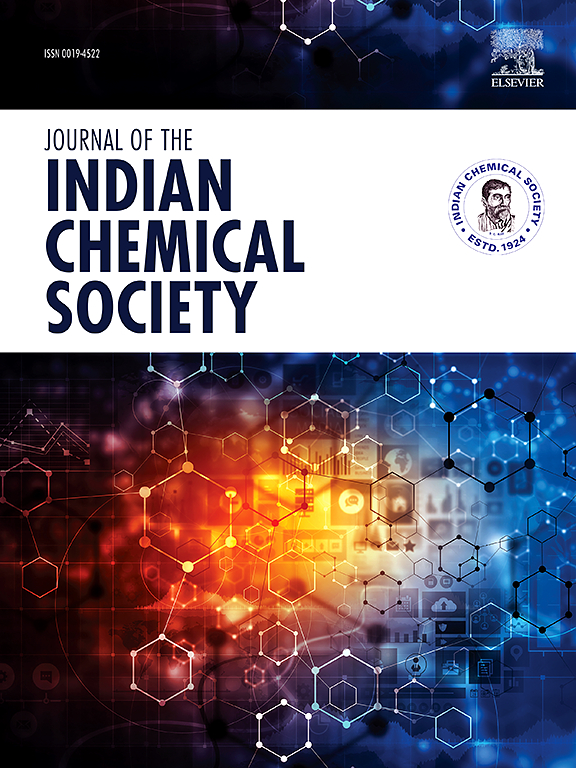Structure, Reactivity, and Bioactivity of Novel Schiff base-Imidazoleacetic Acid Metal Complexes of Fe(III) and Co(II): In Vitro Antimicrobial, Anti-inflammatory Activity, and Molecular Docking Studies
IF 3.2
4区 化学
Q2 CHEMISTRY, MULTIDISCIPLINARY
引用次数: 0
Abstract
This study aims to develop and evaluate novel Fe(III) and Co(II) metal complexes derived from imidazoleacetic acid (IA) and a Schiff base (SB) ligand, targeting enhanced antimicrobial and anti-inflammatory activities. The novelty of this work lies in the strategic metal coordination, which modulates the electronic properties and biological efficacy of the ligands. Comprehensive characterization techniques, including elemental analysis, IR spectroscopy, magnetic moment measurements, electronic spectra, mass spectrometry, thermal analysis, and DFT calculations, confirmed the successful formation of the complexes with a 1:1:1 (M:IA:SB) stoichiometry. Structural analysis revealed that FeIASB adopts an octahedral geometry with one coordinated water molecule, whereas CoIASB exhibits an octahedral geometry with two coordinated water molecules. DFT calculations provided key insights into the electronic modifications induced by metal coordination, highlighting a significant reduction in the energy gap and increased molecular softness, both of which enhance the reactivity and predicted biological activity of the complexes. Biological evaluations demonstrated that FeIASB and CoIASB exhibited remarkable antimicrobial activity against both Gram-positive and Gram-negative bacteria, outperforming the free ligands and showing comparable efficacy to the standard antibiotic Amoxicillin. Similarly, antifungal assessments against Candida albicans and Aspergillus niger confirmed superior activity compared to the uncoordinated ligands. The minimum inhibitory concentration (MIC) values further validated the enhanced potency of the metal complexes. Additionally, the complexes displayed significant anti-inflammatory activity, with FeIASB exhibiting the highest potency, as indicated by its IC50 value closely approaching that of the standard drug. Molecular docking studies against DNA gyrase B revealed that FeIASB possessed the strongest binding affinity, forming multiple hydrogen bonds with key amino acid residues, underscoring its potential as an antibacterial agent. In conclusion, the synthesized FeIASB and CoIASB metal complexes not only offer promising antimicrobial and antifungal properties but also demonstrate substantial anti-inflammatory potential. The electronic modifications induced by metal coordination significantly enhance biological activity, positioning these complexes as promising candidates for future therapeutic applications.

求助全文
约1分钟内获得全文
求助全文
来源期刊
CiteScore
3.50
自引率
7.70%
发文量
492
审稿时长
3-8 weeks
期刊介绍:
The Journal of the Indian Chemical Society publishes original, fundamental, theorical, experimental research work of highest quality in all areas of chemistry, biochemistry, medicinal chemistry, electrochemistry, agrochemistry, chemical engineering and technology, food chemistry, environmental chemistry, etc.

 求助内容:
求助内容: 应助结果提醒方式:
应助结果提醒方式:


